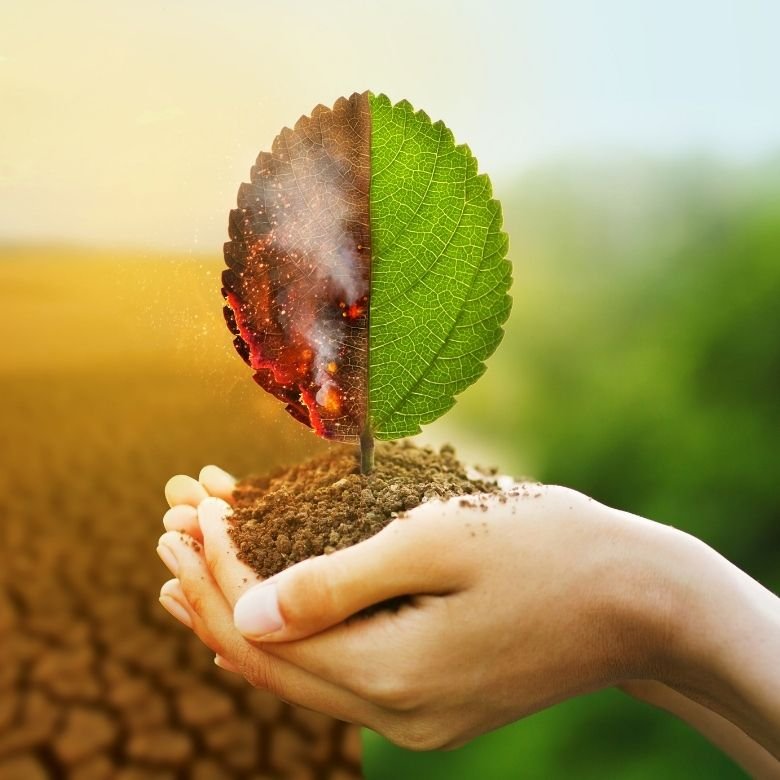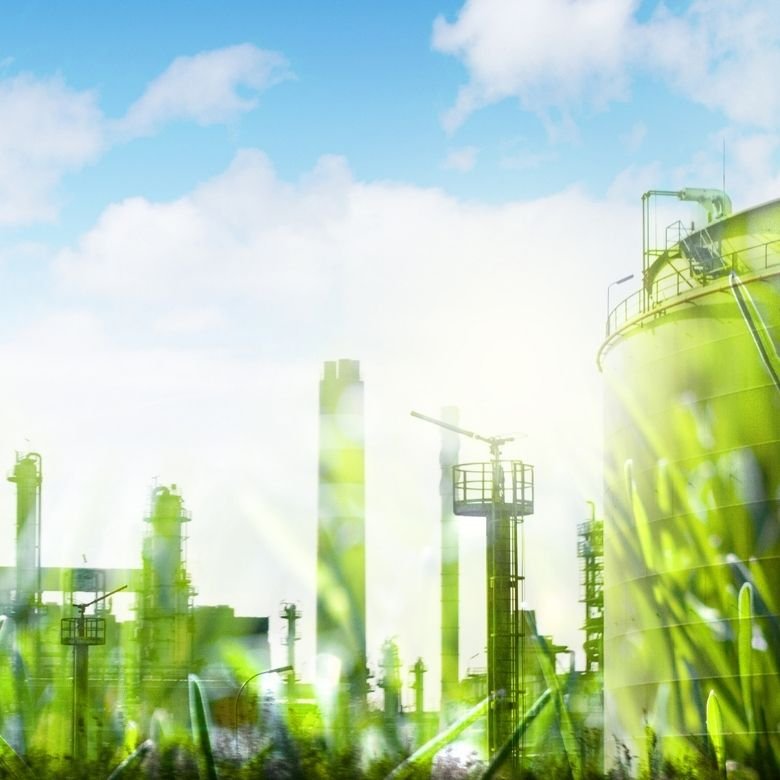Innovative technologies, high-quality raw materials of natural origin, energy derived from renewable sources, elimination of pollution, continuous improvement and following the needs of consumers. This is, in a nutshell, the chemical industry of the 21st century. The growing awareness of the changes taking place in the surrounding environment, but also in our mentality, dynamically creates a technological revolution.
When we think about the future, we stop saying "sometime" but start saying "now". We need immediate solutions that will allow us to actually see the future. So let's consider what trends dominate the chemical market. What changes await the industry in the coming years?

World chemical market
The chemical industry provides us with products that are present in every area of life. Such industries as cosmetics, automotive, construction, pharmaceuticals, food and many others could not exist without raw materials and chemical additives. This makes chemicals one of the largest and key industrial sectors in the world.
In Poland, the chemical industry ranks second in terms of the value of sold production and third in terms of employment. This has a significant impact on the economic development of the country as the Polish chemical segment is one of the world’s best in terms of its growth rate. The situation is similar in other countries. The omnipresence of chemistry makes it occupy an important place in global industry.
Global trends strongly shape the prospects of the chemical industry. However, new challenges are still being faced. The pace of current changes in demand and priorities is driven mainly by new technologies and digitisation but also by the increased demand for environmental protection and resource efficiency. In order to increase its competitiveness on the market, the chemical industry takes further steps to fit in with the most popular trends. Therefore, the key role of chemical producers, who provide products that are a necessary element to maintain the sustainable development of the world economy, is significantly emphasised.
Let us consider what trends and challenges are posed to the chemical industry by consumers on the road to growth and competitiveness in the industrial market.
First – quality of life
It should be noted that the development of the chemical industry has a significant impact on the standard of living of society. It is estimated that in 2050 the world’s population will reach over 9 billion, which could cause a wide variety of problems. Difficulties will be associated with the provision of a sufficient amount of natural resources and energy. A limited amount of food can also become a serious threat. The United Nations (UN) predicts that by 2050 it will be necessary to increase food production by up to 70%.
In the Business Insider, it is noted that if we do not take any measures to prevent a climate catastrophe, GDP (Gross Domestic Product) may shrink by 18% by 2050, and Europe may lose as much as 11%. The changes that await us may result in a decline in the amount of land used for livestock farming and crop production, the extinction of some species, as well as anomalies and climate changes that will make some territories uninhabitable.
Also, scientific research conducted by the Australian Breakthrough National Centre for Climate Restoration confirms that if we do not take serious steps to combat climate change, humanity could face extinction. A 3 degree Celsius rise in temperature over the next 30 years could result in up to 35% of the global land area and around 55% of the world’s population being exposed for 20 days a year to deadly conditions that will emerge as a consequence of massive droughts, melting ice caps and decaying forests.
This knowledge allows us to state that the development of the chemical industry in the coming years will be of great importance for humankind. We are forced to seek alternative sources for vital raw materials or to implement technologies to produce synthetic products. The industry is also making constant efforts to reduce pollutant emissions, which have a huge impact on progressive climate change.

Second – ecology
Many changes related to the pro-environmental approach to the production of chemical products are determined by EU regulations and the internal directives of individual countries. However, the main reason is the growing awareness of the public, which is becoming more and more aware of the dangers of environmentally harmful activities. For a long time, the environmentally friendly image was not synonymous with the chemical industry. This is why the industry is now placing a strong emphasis on sustainability and speaking out about it in its communications. The aforementioned changes are followed by a number of initiatives, such as the use of raw materials of natural origin, energy-saving production technology, or the reduction of CO2 emissions.
Among ecological chemical products, the leaders include the categories of self care, household chemicals and raw materials for the packaging and food industries. Consumers focus on brands that aim to minimise the negative impact on the environment, protect health and natural resources, or improve the living conditions of local communities. Therefore, the demand for ecological products is concentrated mainly among the products with which we have the closest contact on a daily basis. Eco and bio cosmetics or detergents are very popular on store shelves. For customers, such features as effective action, natural composition, biodegradability and the overall impact on our planet are becoming more and more important. The chemical industry faces a great challenge to meet these requirements and provide high-quality, ecological products.
Companies such as the PCC Group have been changing and adapting production facilities and processes to sustainability aspects for years. Among the key solutions undertaken by the industry is obtaining energy for production processes from renewable sources, such as wind, hydro and geothermal energy. The use of raw materials of natural origin is also increasing. As early as at the stage of the formulation design, the topic of the possibility of their biodegradation, recycling (read also about upcycling) or later use dedicated to environmentally-oriented industries, such as passive construction, is addressed.

Third – health and safety
We have been living in a world affected by the COVID-19 pandemic for almost two years. The unknown threat posed by the new disease has led to the popularisation of trends associated with increased health care and hygiene.
It has been confirmed that one of the methods reducing the risk of infection with pathogenic microorganisms is through hygiene and effective disinfection. Raw materials for the production of medical and pharmaceutical preparations and disinfectants have thus been added to the most sought-after product groups. In this way, chemistry has gained even greater importance as a strategic industry for the world economy.
The chemicals that are most often used in these fields include, among others, sodium hypochlorite, sodium hydroxide, monochloroacetic acid and hydrochloric acid. The sale of ready-made disinfectants in the form of personal protection products, preparations for disinfecting household surfaces, but also for professional use for disinfection of public places, workplaces, factories, schools and other large facilities is also very popular.
As part of the joint fight against the pandemic, manufacturers have been reallocating their production capacity to the installations responsible for producing the sought-after raw materials in order to increase access to them, but they have also been charitably donating some of the finished products to the places most in need. This demonstrates the important role played by the chemical industry in protecting health and life.

Fourth – new technologies
The modern world relies on development all the time. Every day we are enriched by new discoveries and modern technologies that improve the comfort of our lives. As mentioned at the beginning of the article: “the chemical industry provides us with products that are present in every area of life”, which is why the availability of various chemical raw materials is the basis of many inventions.
One of the key discoveries at the end of the 20th century was the creation of optical fibre. Its structure is based on such materials as glass fibres and plastics. Thanks to the use of this type of cable, it is possible to transfer data at speeds up to several terabits per second.
However, the introduction of optic fibre technology not only provides us with faster access to the Internet but also allowed us to reduce energy consumption. With around 4 billion active internet users worldwide, we can imagine that they are sending very large amounts of data that need to be sent, processed and stored. In order to deliver these services, countless kilometres of cables, many servers and data transmission devices have been used, polluting the environment and consuming enormous amounts of energy. The International Energy Agency warns that the increase in CO2 emissions by the global network by 2040 is expected to account for around 14% of global emissions, which is 10% more than today.
Therefore, it is important to popularise new solutions, such as cloud services or optical fibres, which can significantly reduce carbon dioxide emissions. For example, fibre optic cables provide an incomparably greater transmission range compared to traditional techniques, which allows the elimination of many devices that additionally consume energy.
The production of optical fibres is still a complicated process, and one of the most important stages is the preparation of the preform, which is used to obtain the optical fibre. Among other things, silicon tetrachloride, which is becoming an increasingly popular chemical raw material, is used to produce preforms. Ultrapure silicon tetrachloride, also available from the PCC Group, is also used in the production of fibres with low attenuation.
Therefore, it is important that the industry gets involved in the production of new raw materials and the development of technologies that can positively affect the safety of people and the environment. This is so that the introduction of pro-ecological changes becomes even easier and each of us can adapt them at home.

Fifth – home
If we are talking about introducing modern technologies into our own four walls, it should be noted how important the role of chemical raw materials used in the construction industry is.
Recently, more and more people have decided to fulfil their dreams of having their own house or apartment, which has resulted in a great demand for building materials. Comfort and safety are the key aspects that customers pay attention to. High-quality products should therefore meet these expectations, which is why ever higher demands are being placed on manufacturers.
Passive construction, which is one of the most advanced types of energy-saving construction, is very popular. One of the greatest advantages of passive buildings is that they need about seven times less energy to heat them than other buildings constructed in accordance with the current standards. This type of building is distinguished by the use of solutions that minimise energy consumption during operation, one of which is, for example, the provision of very good thermal insulation.
To further reduce CO2 emissions from households, the use of renewable energy sources is becoming increasingly common. An example of this would be photovoltaic panels that convert solar energy. It is still a rather expensive investment at the moment, but its benefits are convincing an increasing number of people to take it up. The chemical industry is also taking steps towards the development and increased production of raw materials for the production of panels (such as, for example, silicon tetrachloride) so that this technology becomes even more ecologically and economically beneficial.
Among products dedicated to the construction industry, concrete and mortar additives, polyurethane insulation or additives and raw materials from the CASE group (C – coatings, A – adhesives, S – sealants, E – elastomers) are also very popular. Among them, we can distinguish ready-made thermal insulations, or polyurethane systems and adhesives. On the other hand, among the additives for concrete and mortars, micro-silica (silica dust) is very popular on the market.

What is the future for the chemical industry?
Recent years have confirmed that it is difficult for us to predict the future. An unexpected outbreak of a pandemic, new political conditions, but also climate change and any other phenomena on a global scale have an impact on the prevailing trends. We therefore need to think first and foremost about actions aimed at the “now” in order to secure the conditions for living in the future.
As shown by scientific research and market needs, chemistry plays a very important role in the development of industry and the provision of goods and technologies necessary for life. Everything that surrounds us is made of atoms and molecules. Therefore, chemistry will always appear at the basis of new discoveries or inventions. In response to consumer demand and the problems faced by the world, the chemical industry is constantly developing and adjusting its production capacity.
Apart from the focus on providing the necessary amount of natural resources for survival, energy or raw materials for food and medicine, it is difficult to predict which chemicals will be in greatest demand in the future. However, we can be sure that chemistry will surprise us with new discoveries more than once and will remain one of our most important industries for a long time to come.
Marta Lipka
Marketing Specialist
PCC Rokita
References:
https://businessinsider.com.pl/technologie/nauka/katastrofa-klimatyczna-jak-bedzie-wygladal-swiat-w-2050-roku/w5wmwky
https://www.national-geographic.pl/artykul/raport-cywilizacja-ludzi-upadnie-do-2050-chyba-ze-zatrzymamy-zmiany-klimatyczne
https://www2.deloitte.com/pl/pl/pages/energy-and-resources/articles/Raport-Chemistry-4-0.html
https://www.opzz.org.pl/assets/opzz/media/files/f76c01c8-1f3a-45a8-bfd8-44aa50bde223/przemysl-chemiczny-1.pdf
https://www.kierunekchemia.pl/artykul,54851,prognoza-dla-chemii.html